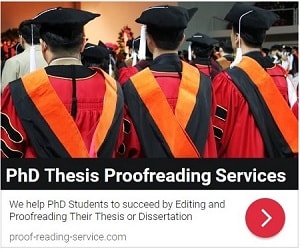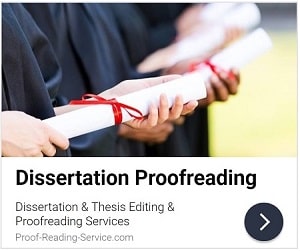Introduction
Serving as an editor of an academic journal is a prestigious and impactful role that allows scholars to shape the direction of research within their field. Editors are responsible for ensuring the quality and integrity of published research, managing peer review processes, and maintaining the journal’s reputation. Beyond these responsibilities, editors have the opportunity to influence scholarly discourse, foster academic collaborations, and contribute to the professional growth of researchers.
This article explores what is achievable as an editor of an academic journal, outlining the key responsibilities, challenges, and opportunities available in this role.
1. Maintaining the Quality and Integrity of Research
One of the primary responsibilities of an academic journal editor is to uphold the quality and integrity of published research. This involves several key tasks:
1.1 Ensuring Rigorous Peer Review
- Editors oversee the peer-review process, selecting qualified reviewers to evaluate submitted manuscripts.
- They ensure that reviewers provide constructive and unbiased feedback to authors.
- By maintaining high standards for acceptance, editors help build the journal’s credibility and impact.
1.2 Preventing Ethical Violations
- Editors play a crucial role in detecting and preventing plagiarism, data fabrication, and conflicts of interest.
- They enforce ethical guidelines from organizations like the Committee on Publication Ethics (COPE).
- When misconduct is identified, editors must take appropriate actions, such as retracting papers or issuing corrections.
✅ Achievement: Building a reputable journal known for academic rigor and ethical publishing practices.
2. Influencing the Direction of Research in the Field
Editors have the power to shape scholarly conversations and drive research agendas by determining which topics receive attention in their journal.
2.1 Setting Editorial Policies and Themes
- Editors can establish policies that prioritize innovative and interdisciplinary research.
- They may launch special issues on emerging or controversial topics to stimulate scholarly debate.
2.2 Encouraging Cutting-Edge Research
- Editors can invite leading scholars to submit papers or contribute to guest editorial pieces.
- By actively engaging with researchers, they help promote high-impact studies that advance knowledge.
✅ Achievement: Shaping the future of research by setting priorities for publication.
3. Enhancing the Journal’s Impact Factor and Reputation
A journal’s impact factor and reputation are crucial in attracting top-quality submissions. Editors play a pivotal role in improving these aspects.
3.1 Improving Journal Citations
- Editors can encourage authors to cite recent and relevant studies published in the journal.
- Publishing state-of-the-art reviews or meta-analyses helps boost citations and enhances the journal’s impact factor.
3.2 Expanding Journal Indexing and Recognition
- Getting the journal indexed in prestigious databases (e.g., Scopus, Web of Science, PubMed) increases visibility.
- Editors can work with publishers to improve the journal’s ranking and global reach.
✅ Achievement: Raising the journal’s prestige and attracting a higher caliber of submissions.
4. Fostering a Global Scholarly Community
Editors have the opportunity to create a diverse, international network of scholars by promoting inclusivity and accessibility in publishing.
4.1 Encouraging Diversity in Submissions and Editorial Board
- Editors can invite scholars from underrepresented regions to contribute and review manuscripts.
- Promoting research from emerging economies and diverse backgrounds enhances global perspectives.
4.2 Supporting Early-Career Researchers
- Editors can mentor young scholars by providing opportunities for them to review papers or contribute to special issues.
- Hosting workshops on academic publishing can help new researchers navigate the peer-review process.
✅ Achievement: Building an inclusive and diverse academic community.
5. Innovating and Adapting to Changes in Scholarly Publishing
Academic publishing is constantly evolving. Editors must adapt to new technologies, open-access models, and changing reader expectations.
5.1 Embracing Open Access Publishing
- Many journals are shifting towards open-access models to make research freely available.
- Editors can explore hybrid models that balance accessibility with financial sustainability.
5.2 Integrating Digital and AI Tools
- Editors can leverage AI-driven plagiarism detection tools and automated manuscript screening to streamline editorial processes.
- Digital platforms enable faster submission handling, peer review tracking, and enhanced communication.
✅ Achievement: Staying ahead of publishing trends and improving efficiency.
6. Managing Editorial Responsibilities Effectively
A successful editor must balance multiple tasks, from managing submissions to coordinating with publishers and authors.
6.1 Improving Peer Review Efficiency
- Editors should ensure timely peer review by setting clear deadlines for reviewers.
- They can implement double-blind review processes to maintain fairness and impartiality.
6.2 Handling Rejections and Revisions Diplomatically
- Editors must communicate rejections professionally, providing authors with constructive feedback.
- When requesting revisions, editors should offer clear guidance on necessary improvements.
✅ Achievement: Maintaining an efficient and transparent editorial workflow.
7. Strengthening Relationships with Authors and Reviewers
Building strong relationships with authors, reviewers, and the broader academic community enhances a journal’s reputation.
7.1 Recognizing and Rewarding Reviewers
- Implementing reviewer recognition programs (e.g., certificates, reviewer rankings) boosts engagement.
- Editors can nominate top reviewers for Editorial Board positions.
7.2 Enhancing Author Experience
- Providing clear submission guidelines and timely communication improves author satisfaction.
- Offering pre-submission guidance helps authors tailor manuscripts to the journal’s scope.
✅ Achievement: Creating a loyal network of contributors and reviewers.
8. Overcoming Challenges as an Editor
Despite its rewards, editing an academic journal comes with challenges:
8.1 Managing High Submission Volumes
- Implementing efficient manuscript triage systems helps prioritize high-quality submissions.
8.2 Handling Controversial or Retraction Cases
- Editors must navigate ethical dilemmas, ensuring fairness in handling disputed cases.
8.3 Balancing Editorial Work with Research Duties
- Many editors juggle academic roles with editorial duties; time management is essential.
✅ Achievement: Developing problem-solving skills and editorial leadership.
Conclusion
Being an editor of an academic journal is a role of influence and responsibility. It offers the chance to shape research landscapes, uphold scholarly integrity, and foster global academic collaboration.
By maintaining rigorous peer-review standards, adapting to new publishing trends, and nurturing relationships with scholars worldwide, an editor can elevate their journal’s impact and contribute significantly to their field.
Ultimately, success as an academic journal editor comes down to vision, ethical leadership, and a commitment to advancing knowledge.














